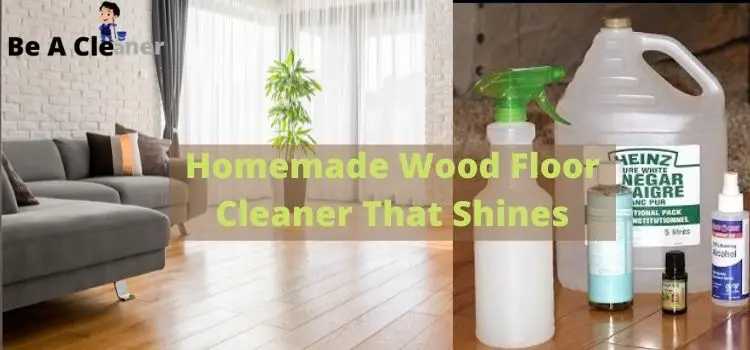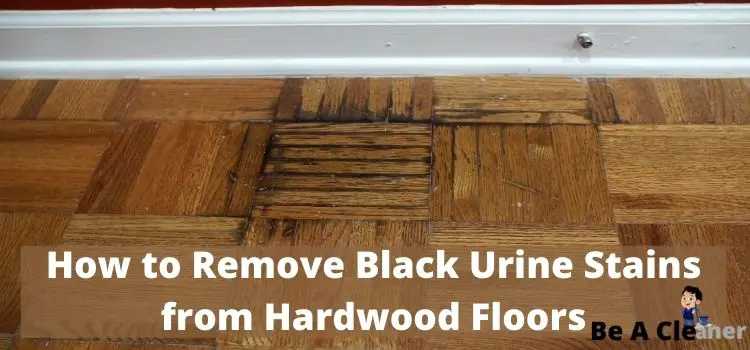· Floor Cleaning · 7 min read
How To Clean Sticky Hardwood Floors

Tackling Sticky Hardwood Floors: A Step-by-Step Guide
Ever walked across your beautiful hardwood floors only to feel a frustrating stickiness underfoot? It’s a common problem, and thankfully, a solvable one! Sticky hardwood floors are often caused by residue from cleaning products, spills, or even tracked-in grime. This article will guide you through how to clean sticky hardwood floors effectively, restoring their shine and making them pleasant to walk on again. We’ll cover everything from identifying the cause of the stickiness to choosing the right cleaning solutions and techniques. Let’s get started and bring back the beauty of your hardwood floors!
Takeaway:
- Identify the source of the stickiness.
- Start with gentle cleaning methods.
- Use appropriate cleaning solutions for hardwood.
- Dry the floor thoroughly to prevent further issues.
What causes hardwood floors to feel sticky?
Sticky hardwood floors usually happen when a film builds up on the surface. This film can come from using too much soap when mopping, spills that weren’t cleaned up immediately, or even residue from furniture polish. Sometimes, the stickiness isn’t from something on the floor, but a reaction within the finish itself, especially if it’s an older finish. Knowing the cause helps you choose the best cleaning method.
1. Identifying the Type of Hardwood Finish
Before you start cleaning, it’s crucial to know what type of finish your hardwood floors have. Different finishes require different cleaning approaches. Using the wrong cleaner can damage the finish, leading to costly repairs.
Surface Finishes vs. Penetrating Finishes
There are two main types of hardwood floor finishes: surface finishes and penetrating finishes. Surface finishes, like polyurethane, create a protective layer on top of the wood. Penetrating finishes, like oil-based finishes, soak into the wood.
- Polyurethane: This is the most common finish. A drop of water will bead up on the surface.
- Oil-Based: Water will darken the wood and absorb slightly.
- Wax: Feels soft and can be easily scratched.
If you’re unsure, consult the original flooring documentation or contact a flooring professional. Knowing your finish is the first step to a successful clean.
2. The Gentle Approach: Warm Water and Microfiber
Often, the simplest solution is the best. Start with warm water and a microfiber mop. Microfiber is excellent because it traps dirt and grime without leaving behind residue. Avoid using excessive water, as it can damage hardwood floors.
How to Mop with Warm Water
- Sweep or vacuum the floor to remove loose debris.
- Dampen a microfiber mop with warm water – it should not be soaking wet.
- Mop the floor in the direction of the wood grain.
- Rinse the mop frequently in clean water.
- Dry the floor immediately with a clean, dry microfiber cloth.
This method is effective for light stickiness caused by dust and minor residue. If the stickiness persists, move on to the next step. You can find more information on general hardwood floor care at https://www.beacleaner.com/how-to-clean-hardwood-floors-with-vinegar/.
3. Vinegar and Water Solution: A Natural Cleaner
White vinegar is a natural degreaser and can effectively cut through sticky residue. However, it’s important to use it diluted, as vinegar is acidic and can damage the finish if used undiluted.
Creating the Vinegar Solution
- Mix 1/2 cup of white vinegar with 1 gallon of warm water.
- Dip a microfiber mop into the solution, ensuring it’s wrung out well.
- Mop the floor in the direction of the wood grain.
- Rinse the floor with clean water using a separate microfiber mop.
- Dry the floor thoroughly with a clean, dry microfiber cloth.
Always test the vinegar solution in an inconspicuous area first to ensure it doesn’t damage the finish. This is a great option for removing sticky residue from spills or tracked-in dirt.
4. Dish Soap Solution: For Greasy Residue
If the stickiness is caused by grease or oil, a mild dish soap solution can be effective. Again, moderation is key – too much soap will leave behind a residue that can worsen the problem.
Using Dish Soap Safely
- Add 1-2 drops of mild dish soap to 1 gallon of warm water.
- Mix well to ensure the soap is evenly distributed.
- Dampen a microfiber mop with the solution, wringing it out thoroughly.
- Mop the floor in the direction of the wood grain.
- Rinse the floor with clean water using a separate microfiber mop.
- Dry the floor completely with a clean, dry microfiber cloth.
Avoid using dish soaps with harsh chemicals or added fragrances, as these can damage the finish. If you’re dealing with a particularly stubborn grease stain, consider a specialized wood floor cleaner.
5. Specialized Hardwood Floor Cleaners
For persistent stickiness or if you’re unsure about using homemade solutions, specialized hardwood floor cleaners are a safe and effective option. These cleaners are formulated to clean hardwood floors without damaging the finish.
Choosing the Right Cleaner
- pH-Neutral Cleaners: These are generally safe for all types of hardwood finishes.
- Read the Label: Ensure the cleaner is specifically designed for hardwood floors and compatible with your floor’s finish.
- Follow Instructions: Always follow the manufacturer’s instructions for dilution and application.
Bona and Murphy Oil Soap are popular brands, but always test the cleaner in an inconspicuous area before applying it to the entire floor. You can also explore options for cleaning other floor types, like https://beacleaner.com/how-to-clean-luxury-vinyl-plank-flooring/.
6. Removing Stubborn Residue: Baking Soda Paste
For particularly stubborn sticky spots, a baking soda paste can help. Baking soda is a mild abrasive that can gently lift residue without scratching the finish.
Making and Applying the Paste
- Mix baking soda with a small amount of water to form a paste.
- Apply the paste to the sticky spot.
- Gently rub the paste in a circular motion with a soft cloth.
- Rinse the area with clean water.
- Dry the area thoroughly with a clean, dry cloth.
Use this method sparingly, as excessive scrubbing can damage the finish. It’s best for isolated sticky spots rather than the entire floor.
7. Preventing Future Stickiness: Maintenance Tips
Once you’ve cleaned your sticky hardwood floors, it’s important to take steps to prevent the problem from recurring. Regular maintenance is key to keeping your floors clean and shiny.
- Sweep or Vacuum Regularly: Remove dirt and debris before they can build up.
- Use Doormats: Place doormats at entrances to trap dirt and moisture.
- Clean Spills Immediately: Wipe up spills as soon as they happen to prevent residue from forming.
- Avoid Harsh Chemicals: Use only cleaners specifically designed for hardwood floors.
- Proper Ventilation: Ensure good ventilation to prevent moisture buildup.
Taking these preventative measures will help you maintain the beauty of your hardwood floors for years to come. If you’re also dealing with pet messes, check out https://www.beacleaner.com/how-to-keep-hardwood-floors-clean-of-dog-hair/ for helpful tips.
FAQ: Common Questions About Sticky Hardwood Floors
Q: Why are my hardwood floors sticky even after cleaning?
A: The stickiness might be due to a buildup of cleaning product residue. Try rinsing the floor with clean water several times and drying it thoroughly. If that doesn’t work, the finish may be deteriorating, requiring professional refinishing.
Q: Can I use steam mops on hardwood floors?
A: Generally, steam mops are not recommended for hardwood floors. The excessive moisture can penetrate the wood and cause warping or damage. Check your floor manufacturer’s recommendations before using a steam mop. You can learn more about steam mops and floor compatibility at https://beacleaner.com/can-you-use-a-steam-mop-on-linoleum/.
Q: What’s the best way to clean sticky hardwood floors with pets?
A: Use a pH-neutral hardwood floor cleaner specifically designed for pet owners. These cleaners are formulated to remove pet messes and odors without damaging the finish. Regular sweeping and vacuuming are also essential.
Q: How often should I clean my hardwood floors?
A: Sweep or vacuum your hardwood floors at least once a week. Deep clean them with a hardwood floor cleaner every 1-2 months, or as needed.
Q: Can I use lemon juice to clean sticky hardwood floors?
A: While lemon juice has cleaning properties, it’s acidic and can damage the finish of your hardwood floors. It’s best to avoid using lemon juice and opt for safer alternatives like vinegar diluted with water.
Conclusion: Restoring Your Floors to Their Former Glory
Cleaning sticky hardwood floors doesn’t have to be a daunting task. By identifying the cause of the stickiness, choosing the right cleaning solutions, and following the steps outlined in this guide, you can restore your floors to their former glory. Remember to always test cleaning solutions in an inconspicuous area first and dry the floor thoroughly after cleaning. With regular maintenance and a little effort, you can enjoy beautiful, clean, and non-sticky hardwood floors for years to come. Don’t hesitate to consult a professional if you’re unsure about any aspect of the cleaning process or if the stickiness persists. Now, go ahead and give your hardwood floors the care they deserve!



